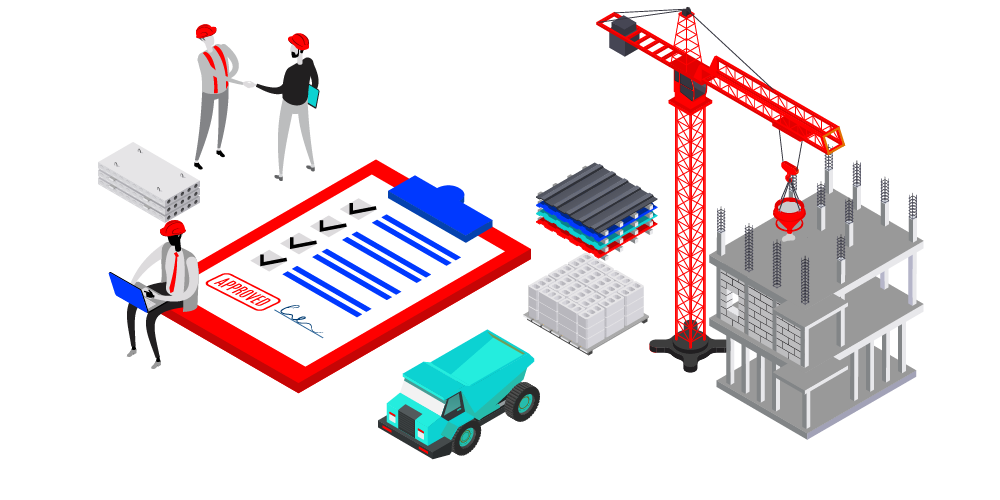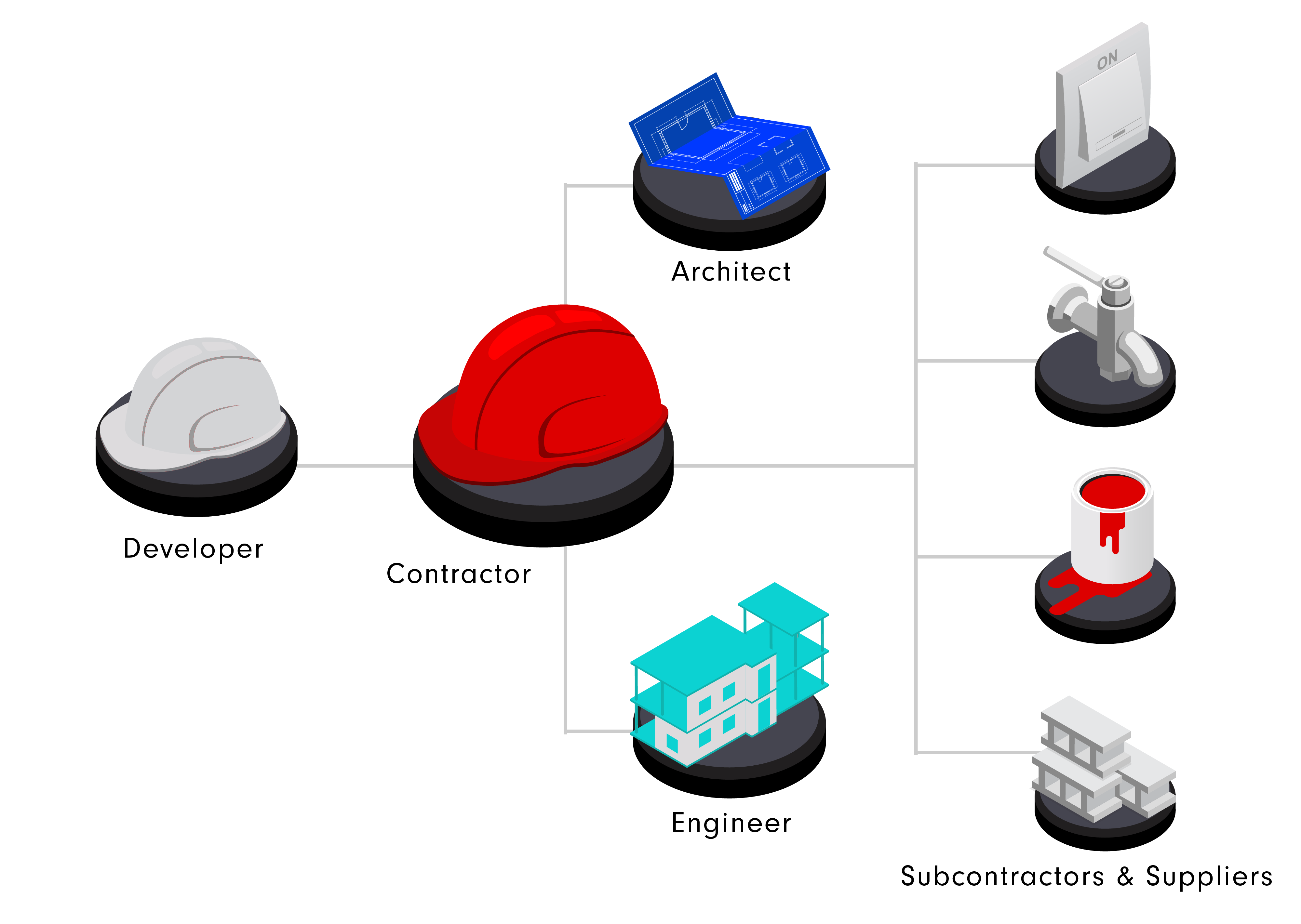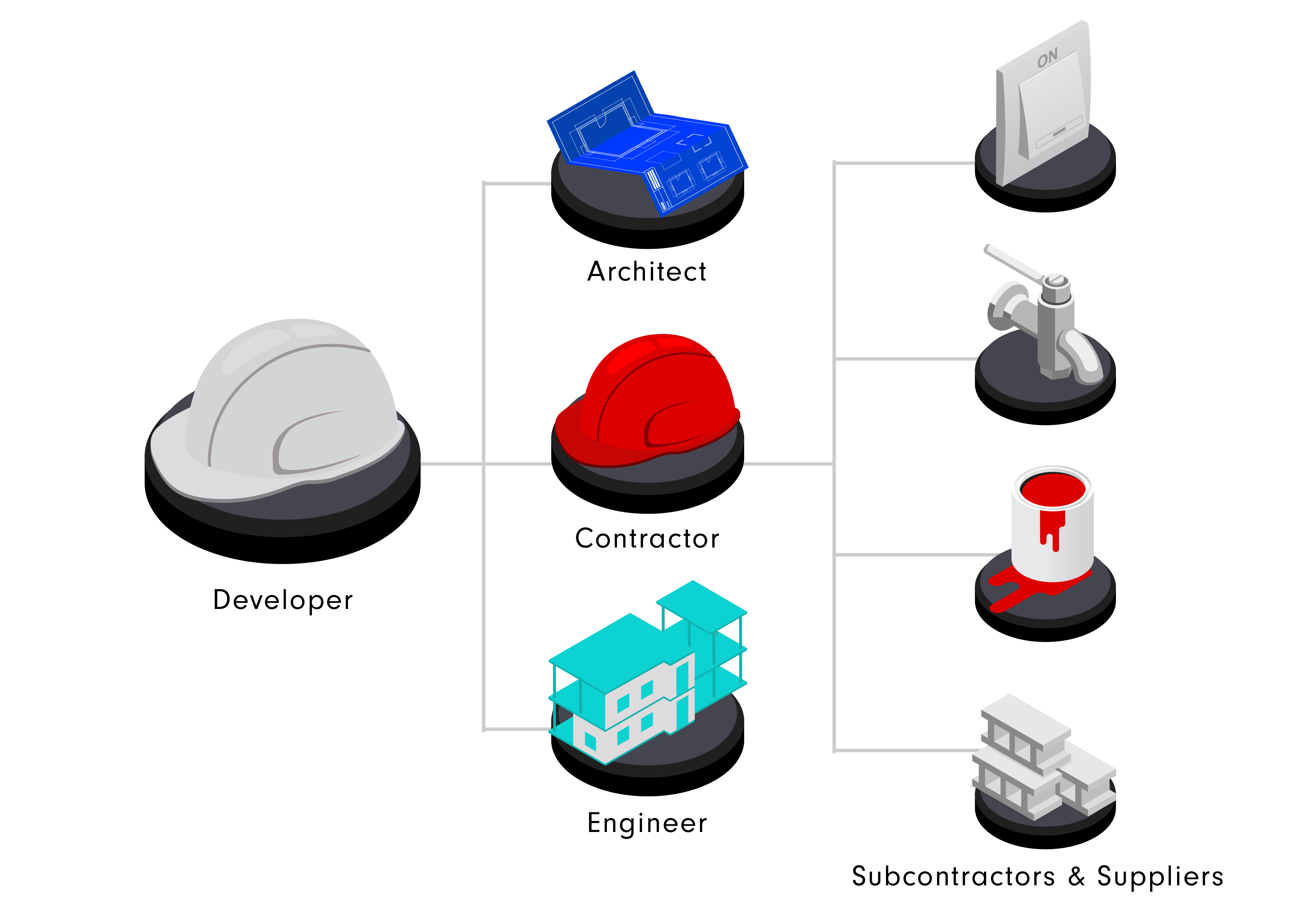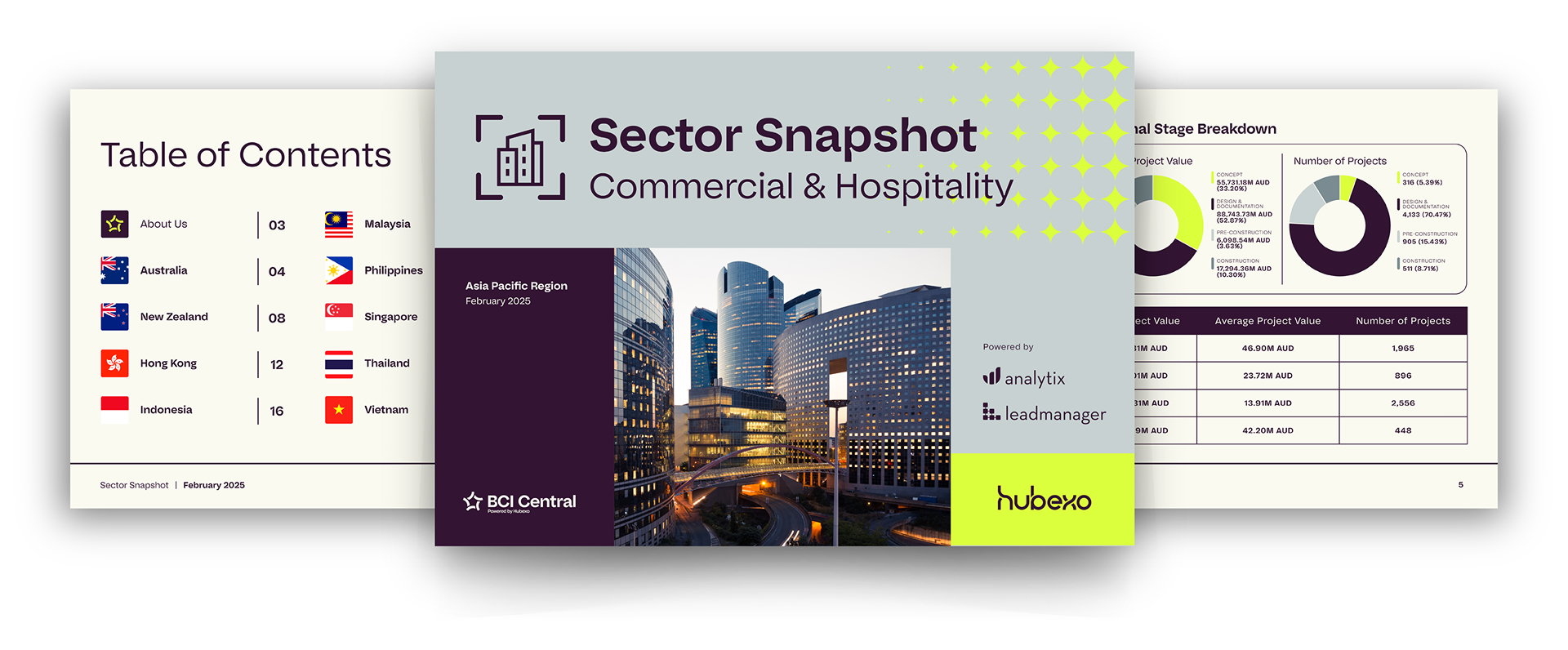- หน้าหลัก
- >
- Design and Build Contract vs Traditional Contract
Design and Build Contract vs Traditional Contract

In the world of construction tendering, also known as bidding, understanding the nuances of different contract types is essential for success. Contractors often encounter two contract structures: the Design and Build contract (D&B) and the traditional contract.
The D&B is handled by one contractor who is responsible for both the design and the construction of the project, while a traditional contract follows the design-bid-build model. In this article, we’ll explore these contract types from a contractor’s perspective, helping you make informed decisions and tailor your bids effectively.
Design and Build Contract
For a Design and Build (D&B)/Design and Construct (D&C)/package deal contract, the project developer contracts with a single entity—the D&B contractor or Design Builder—who is responsible for both design and construction:
- Design and Construction Phase: The D&B contractor takes charge of the entire project, from design inception to final construction.
Tendering for Design & Build Contracts
Winning D&B/D&C contracts demand a different approach to traditional contracts:
- Design Competency: Showcase your design capabilities and experience, as your proposal will include the design aspect. Highlight innovative design solutions and value engineering opportunities.
- Collaboration Skills: Emphasise your ability to work closely with the project developer and translate their vision into a cost-effective and efficient design and construction plan.
- Project Management Expertise: Showcase your track record in successfully managing projects from design to completion, emphasising on-time and on-budget delivery.
Advantages and Disadvantages of Design & Build Contracts:
Some of the advantages of a D&B contract include:
- Single Point of Responsibility: D&B or D&C contracts offer a streamlined process with a single entity responsible for both design and construction. This can reduce communication challenges and disputes.
- Faster Project Delivery: The integration of design and construction phases often leads to shorter project timelines, which can be advantageous for both the contractor and the project developer.
- Cost Predictability: Contractors in D&B or D&C contracts have a deeper understanding of the project’s cost implications, allowing for more accurate and predictable pricing.
Some of the disadvantages of a D&B include:
- Design Expertise Required: Contractors must possess strong design capabilities or collaborate closely with design professionals, which may not align with every contractor’s strength.
- Increased Responsibility: D&B or D&C contracts come with added responsibility, as contractors are accountable for both the design and construction phases.
- Risk Allocation: Contractors in D&B or D&C contracts assume more design-related risks, including potential revisions or modifications.
Traditional Contract
In a traditional contract, also known as a “design-bid-build” model, the procurement process unfolds in the following order:
- Design Phase: The project developer engages an architect or designer to create detailed plans and specifications.
- Tendering Phase: Once the design is complete, the developer seeks bids from contractors.
- Construction Phase: The contract is awarded, and construction commences on the project.
Tendering for Traditional Contracts
Tendering for traditional contracts requires a meticulous approach:
- Plan Interpretation: Success depends on your ability to thoroughly understand and accurately interpret the provided design plans and specifications. Any ambiguities or uncertainties must be addressed in your bid.
- Competitive Pricing: Open competition among contractors is common in traditional contracts. To stand out, your bid must offer competitive pricing while ensuring profitability.
- Experience and Qualifications: Highlight your relevant experience and qualifications, emphasising your ability to execute the project as specified.
Advantages and Disadvantages of Traditional Contracts
What are the pros of a traditional contract?
- Clear Scope: In traditional contracts, the project’s scope is typically well-defined from the outset. As a contractor, you have precise project specifications and plans to work with, reducing ambiguity.
- Competitive Tendering: Traditional contracts often involve competitive tendering, allowing contractors to showcase their cost efficiency and potentially secure projects based on competitive pricing.
- Specialised Tendering: Contractors can target projects that align with their specific expertise, as they have a clear understanding of the project’s scope and requirements.
On the other hand, some of the disadvantages of traditional contracts include:
- Limited Influence: Contractors have minimal influence over the project’s design and may find it challenging to propose innovative solutions or value engineering.
- Risk of Plan Changes: Design changes or discrepancies may arise during construction, potentially leading to disputes or additional costs for the contractor.
- Competition Intensity: The competitive nature of traditional contracts can lead to tight profit margins, making it challenging to secure contracts with favourable profitability.
Choosing between D&B/D&C or Traditional Contracts
The choice between tendering for D&B/D&C contracts or traditional contracts depends on various factors:
- Expertise: Consider your team’s strengths and qualifications. If you have strong design expertise and the appropriate resources, D&B/D&C contracts may be a natural fit. Otherwise, traditional contracts might align better with your strengths.
- Risk Tolerance: Evaluate your willingness to manage design-related risks in traditional contracts versus the increased responsibility and control in D&B/D&C contracts.
- Resource Availability: Consider the availability of design professionals within your organization or your ability to collaborate effectively with external designers.
- Client Preferences: Some clients prefer one contract type over the other, so consider aligning your tendering strategy with your target clients’ expectations.
In conclusion, both design and build (D&B) contracts and traditional contracts present opportunities and challenges for vendors. The key to success lies in a thorough understanding of your own capabilities, risk tolerance, and the specific demands of the project. By carefully assessing each contract type’s pros and cons, you can tailor your tendering strategy to secure projects that align with your strengths and objectives.
BCI Central reports on both design and build (D&B) contracts and traditional contracts in our construction project database, LeadManager. If you’re looking to grow your pipeline and source new work, get in touch for a free demo.






